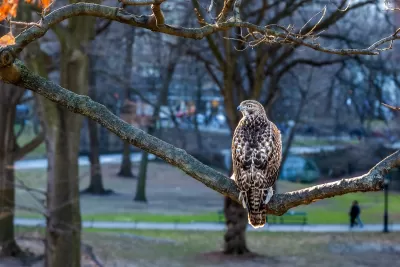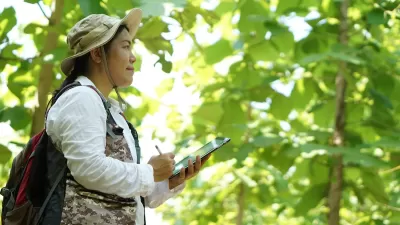The City Nature Challenge invites people worldwide to document urban biodiversity by photographing and sharing wild plants and animals through the iNaturalist app, helping scientists track and understand real-time changes in ecosystems.

The City Nature Challenge is a global event happening from April 25 to April 28, 2025, inviting individuals of all ages and backgrounds to explore and document the wild plants, animals, and fungi in their surroundings. This initiative aims to engage community scientists, nature enthusiasts, and everyday observers to contribute to tracking real-time biodiversity changes. By sharing photographs of wildlife, participants help scientists better understand the planet’s ecosystems and advance wildlife conservation efforts.
Participation is simple and starts at home. Observers can explore their homes, backyards, or neighborhoods to find wild plants, insects, or animals—whether it is a bird on a powerline, a weed sprouting in the yard, or an insect scurrying under leaves. Local parks also provide excellent opportunities to discover different species by checking grass, plants, benches, and trees. Safety is paramount, so participants are encouraged to be mindful of their surroundings when exploring and documenting wildlife.
To join, download the iNaturalist app and follow four easy steps: locate wildlife in your area, take photos of wild plants and animals, share your findings through the app, and engage with the community as your observations are identified. Remember to mark anything planted or cared for by people as “captive” or “cultivated” to ensure accurate data. By participating in the City Nature Challenge, you will not only contribute to global biodiversity research but also gain a deeper appreciation for the natural world around you.
FULL STORY: 2025 City Nature Challenge

Alabama: Trump Terminates Settlements for Black Communities Harmed By Raw Sewage
Trump deemed the landmark civil rights agreement “illegal DEI and environmental justice policy.”

Study: Maui’s Plan to Convert Vacation Rentals to Long-Term Housing Could Cause Nearly $1 Billion Economic Loss
The plan would reduce visitor accommodation by 25% resulting in 1,900 jobs lost.

Why Should We Subsidize Public Transportation?
Many public transit agencies face financial stress due to rising costs, declining fare revenue, and declining subsidies. Transit advocates must provide a strong business case for increasing public transit funding.

Paris Bike Boom Leads to Steep Drop in Air Pollution
The French city’s air quality has improved dramatically in the past 20 years, coinciding with a growth in cycling.

Why Housing Costs More to Build in California Than in Texas
Hard costs like labor and materials combined with ‘soft’ costs such as permitting make building in the San Francisco Bay Area almost three times as costly as in Texas cities.

San Diego County Sees a Rise in Urban Coyotes
San Diego County experiences a rise in urban coyotes, as sightings become prevalent throughout its urban neighbourhoods and surrounding areas.
Urban Design for Planners 1: Software Tools
This six-course series explores essential urban design concepts using open source software and equips planners with the tools they need to participate fully in the urban design process.
Planning for Universal Design
Learn the tools for implementing Universal Design in planning regulations.
Smith Gee Studio
Alamo Area Metropolitan Planning Organization
City of Santa Clarita
Institute for Housing and Urban Development Studies (IHS)
City of Grandview
Harvard GSD Executive Education
Toledo-Lucas County Plan Commissions
Salt Lake City
NYU Wagner Graduate School of Public Service





























